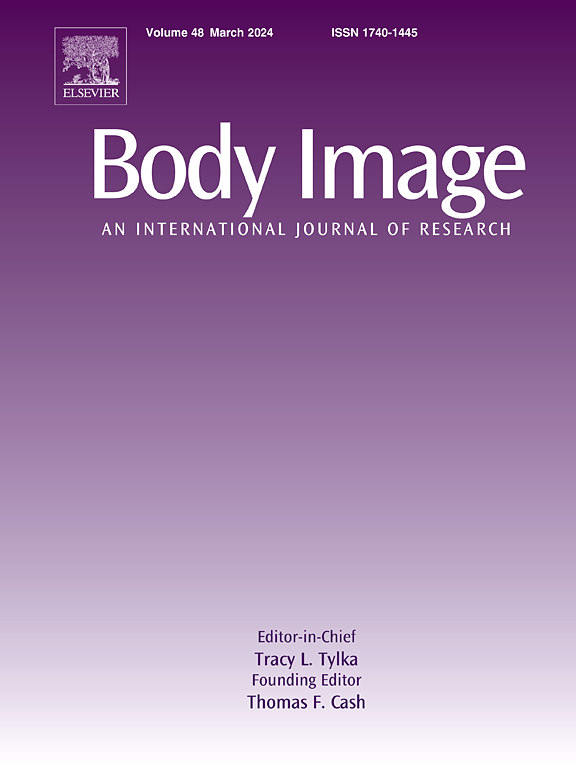"我们这些大男孩必须找到一种可行的方式":关于身材高大的白人和拉丁裔性少数群体男性偶然性经历的定性研究。
IF 5.2
1区 心理学
Q1 PSYCHIATRY
引用次数: 0
摘要
与异性恋男性相比,性少数群体男性(SMM)更有可能表示自己的身体形象对他们的性生活产生了负面影响,更容易受到体重污名化的影响,也更频繁地遭遇基于体型的歧视。此外,与异性恋男性相比,性少数群体男性更容易受到针对自己和亲密伴侣的反胖偏见。鉴于这些文献,我们对九名身材较胖的 SMM(Mage = 37.89,SD = 12.42)进行了定性研究,了解他们在寻求偶然性行为时如何体验和驾驭体重鄙视。我们的分析过程揭示了四个主要的主题:建立一扇门、让伴侣越过这扇门、门内的欢乐以及当这扇门失效时。门是指参与者为避免负面、不安全或恐胖的性接触而采取的保护措施。参与者分享说,他们意识到自己所在社区对体重的鄙视,许多人认为(或被明确告知),他们的身体对潜在伴侣来说是不受欢迎的。此外,参与者很容易区分脂肪吸引和脂肪迷恋,后者被普遍视为负面和有辱人格的行为。这些研究结果凸显了大块头男性同性恋者在休闲性爱中的复杂经历,并指出了这些男性用来保护自己免受身体羞耻和体重羞辱的策略。本文章由计算机程序翻译,如有差异,请以英文原文为准。
“Us big boys gotta find a way that works”: A qualitative study of casual sexual experiences among larger-bodied, White and Latino sexual minority men
Compared to their heterosexual counterparts, sexual minority men (SMM) are more likely to report that their own body image negatively impacts their sex lives, are more vulnerable to weight stigma, and more frequently experience size-based discrimination. Additionally, in comparison to heterosexual men, SMM report higher levels of anti-fat bias, both directed at themselves and intimate partners. Given this literature, we qualitatively examined how nine larger-bodied SMM (Mage = 37.89, SD = 12.42) experience and navigate weight stigma when seeking out casual sex. Our analytic process revealed four primary themes: Building a Gate, Letting Partners Past the Gate, Joy Inside the Gate, and When the Gate Fails. The gate refers to the protection that participants employed to avoid negative, unsafe, or fatphobic sexual encounters. Participants shared that they were aware of weight stigma within their own community, and many assumed (or were explicitly told) that their bodies were undesirable to potential partners. Further, participants readily delineated between fat attraction and fat fetishization, whereby the latter was universally framed as negative and degrading. These findings highlight the complex experience of engaging in casual sex for larger-bodied SMM and identify strategies these men use to protect themselves from body shame and weight stigma.
求助全文
通过发布文献求助,成功后即可免费获取论文全文。
去求助
来源期刊

Body Image
Multiple-
CiteScore
8.70
自引率
28.80%
发文量
174
期刊介绍:
Body Image is an international, peer-reviewed journal that publishes high-quality, scientific articles on body image and human physical appearance. Body Image is a multi-faceted concept that refers to persons perceptions and attitudes about their own body, particularly but not exclusively its appearance. The journal invites contributions from a broad range of disciplines-psychological science, other social and behavioral sciences, and medical and health sciences. The journal publishes original research articles, brief research reports, theoretical and review papers, and science-based practitioner reports of interest. Dissertation abstracts are also published online, and the journal gives an annual award for the best doctoral dissertation in this field.
 求助内容:
求助内容: 应助结果提醒方式:
应助结果提醒方式:


